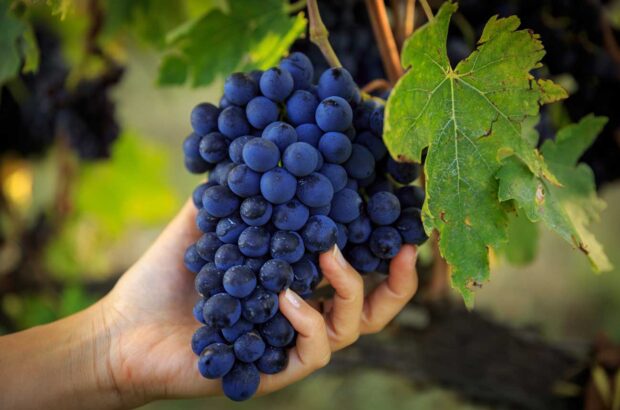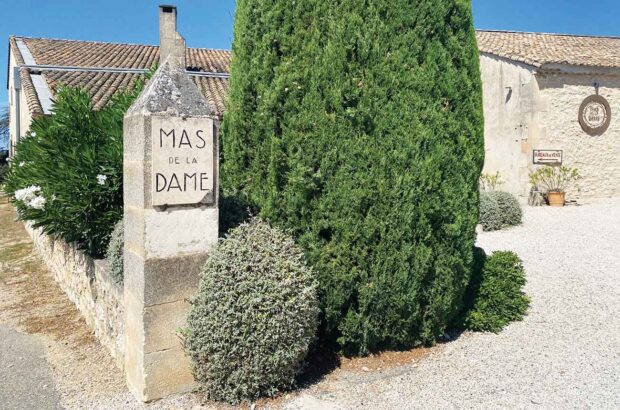Have you ever opened a bottle of wine to find white or red crystalline deposits stuck to the bottom of the cork, glinting at the base of the bottle, or even floating in the wine itself? Did you feel unsettled or not sure whether you should drink it? Hopefully you did enjoy your bottle with abandon.
Sometimes colloquially known as ‘wine diamonds’, these small crystals are not only harmless but also a possible indicator of quality. ‘Some equate their presence as a mark of quality, in that the wine has not been overly manipulated in the cellar,’ said the late, great Gérard Basset OBE MW MS in response to a Decanter reader query in 2016.
Tartrate crystals in wine – what are they?
‘Many people think these clear crystals floating in the wine or stuck to the cork are salt, sugar, sediment or even broken glass,’ continues Basset.
The main component of these deposits is potassium acid tartrate, the potassium salt of tartaric acid. Traces of other elements – pulp, dead yeast cells, tannins, pigments – contaminate, and potentially colour, the potassium acid tartrate crystals. This is why in white wines the crystals are mostly colourless and perfectly-shaped, while in red wines – and to an extent orange wines – tannins and pigmented tannins make the crystals reddish brown, smaller and irregularly-shaped (and more likely referred to as ‘sediment’).
So where does the potassium acid tartrate come from? It all starts with tartaric acid, one of the three main acids – along with malic acid and citric acid – responsible for the tartness in both grapes and wines. Malic acid is partially or fully converted to the creamier-tasting lactic acid during malolactic fermentation. Tartaric acid, on the other hand, is chemically more stable and remains dissolved in the finished wine, contributing to the wine’s final pH levels and resistance to microbiological spoilage.
Tartaric acid compounds are less soluble on alcohol and water solutions, such as wine, than in water or grape juice. While it may remain in a supersaturated state in the final wine, it will likely crystallise at some point, mostly due to temperature fluctuations that change solubility levels. This is called tartrate instability – not an issue in itself except for the alarm caused on perplexed consumers. The pressure, from consumers and retailers, to avoid these unexpected findings led the industry to develop multiple techniques to ensure tartrate stabilisation.
How are the crystals formed?
The solubility of tartaric acid compounds increases with temperature. Colder temperatures therefore cause crystals to form. ‘When exposed to cold temperatures, the tartaric acid naturally found in grapes binds with potassium to form a compound called potassium bitartrate,’ explains Basset. ‘It’s the same as cream of tartar used in cooking.’ And in fact, nearly all commercial cream of tartar is collected from wineries.
If you find crystals in your wine at home, Basset said, ‘once formed they’ll never disappear, but they won’t affect the aroma, taste or quality of the wine.’

Sediment in a glass of red wine. Credit: Yanik Florin | Alamy Stock Photo
Tartrate stabilisation
Most industrially-produced, mass-marketed wines will undergo tartrate stabilisation to avoid the unpredictable formation of crystals. The most common process is cold stabilisation: the wine is refrigerated for several days before bottling to between -5 and -10℃ which causes the tartrate crystals to precipitate. These are then filtered out and the wine is brought back to cellar temperature. The final tartrate levels are low enough for it to be very unlikely for more crystals to precipitate in a customer’s fridge, restaurant’s cellar or supermarket stock room. Other methods include the addition of mannoproteins that inhibit tartrate precipitation or electrodyalisis, a sophisticated, very selective, membrane filtration process.
Because many of these processes can have a negative impact on the flavour and structure of the wine – mostly because they will also remove other components and, because the pH increases, the wine will be microbiologically more unstable – higher-quality and/or age-worthy wines will likely avoid tartrate stabilisation. Hence why you will likely find sediments of some sort in aged bottles of renowned wines.
How a wine is stored will determine how and where the crystals will cluster – and whether they will be noticeable at all. Tartrate crystals will typically gather and stick to the cork – and therefore removed when the wine is opened – if a bottle is stored upside down. If stored upright, the crystals will settle at the bottom and likely be poured out with the last glass. If a wine is on screwcap, the crystals will either accumulate at the bottom and sides of the bottle or float in the wine, as they don’t adhere to the closure.
Instead of being alarmed, you should view the presence of crystals as a sign of savvy, lower-intervention winemaking in which the preservation of the wine’s full character and its longevity have taken precedence over reassuring predictability. ‘If you find [the crystals] unsightly,’ concludes Basset, ‘you can either decant the wine before serving or filter it through a muslin cloth.’
This article was originally written by Gérard Basset OBE MW MS in response to a Decanter magazine reader query, and published online in 2016. It has been updated with new copy in August 2024.







